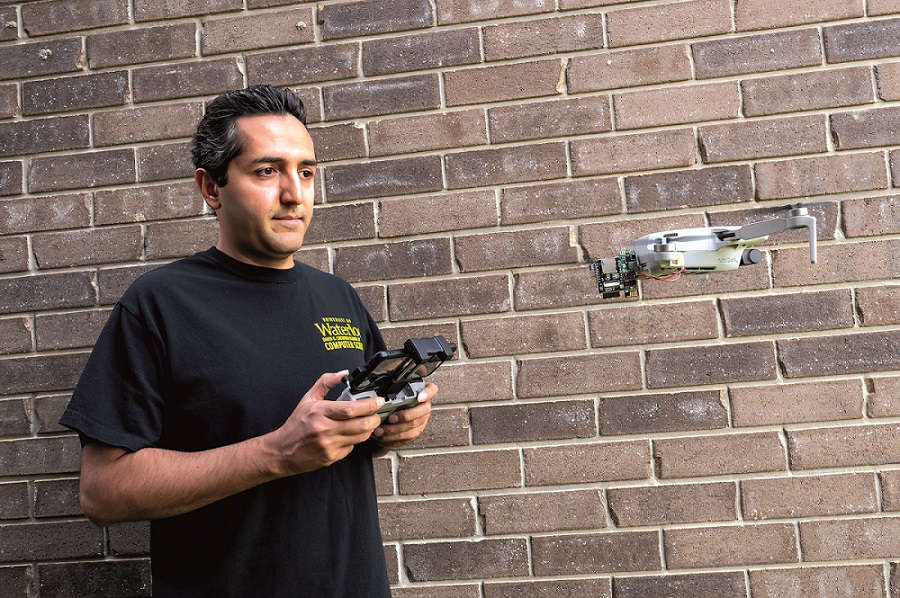Wi-fi loophole warning

Airborne vehicles
Researchers in Canada have developed a UAV that can use wi-fi signals to see through walls (writes Nick Flaherty).
The device, nicknamed Wi-Peep, can fly near a building and identify and locate all the wi-fi-enabled devices inside it in a matter of seconds.
The Wi-Peep exploits a loophole the researchers call ‘Polite wi-fi’. Even if a network is password protected, smart devices will automatically respond to contact attempts from any device within range. The time-of-flight protocol used by Wi-Peep sends several messages to a device as it flies and then measures the response time for each, enabling it to identify the device’s location to within a metre.
“The Wi-Peep devices are like lights in the visible spectrum, and the walls are like glass,” said Dr Ali Abedi, a professor of computer science at the University of Waterloo in Canada.
“Using similar technology, one could track the movements of security guards inside a bank by following the location of their phones or smartwatches. Likewise, a thief could identify the location and type of smart devices in a home, including security cameras, laptops and smart TVs, to find a good candidate for a break-in. In addition, the device’s operation via UAV means it can be used quickly and remotely without much chance of the user being detected,” he said.
The system is built from a commercial UAV and $20 of easily purchased 2.4 GHz radio detection hardware that weighs 10 g, making it light enough to mount on a UAV.
“As soon as the Polite wi-fi loophole was discovered, we realised that this kind of attack was possible,” said Dr Abedi. “On a fundamental level, we need to fix the loophole so that our devices do not respond to strangers. We hope our work will inform the design of next-generation protocols.”
UPCOMING EVENTS























